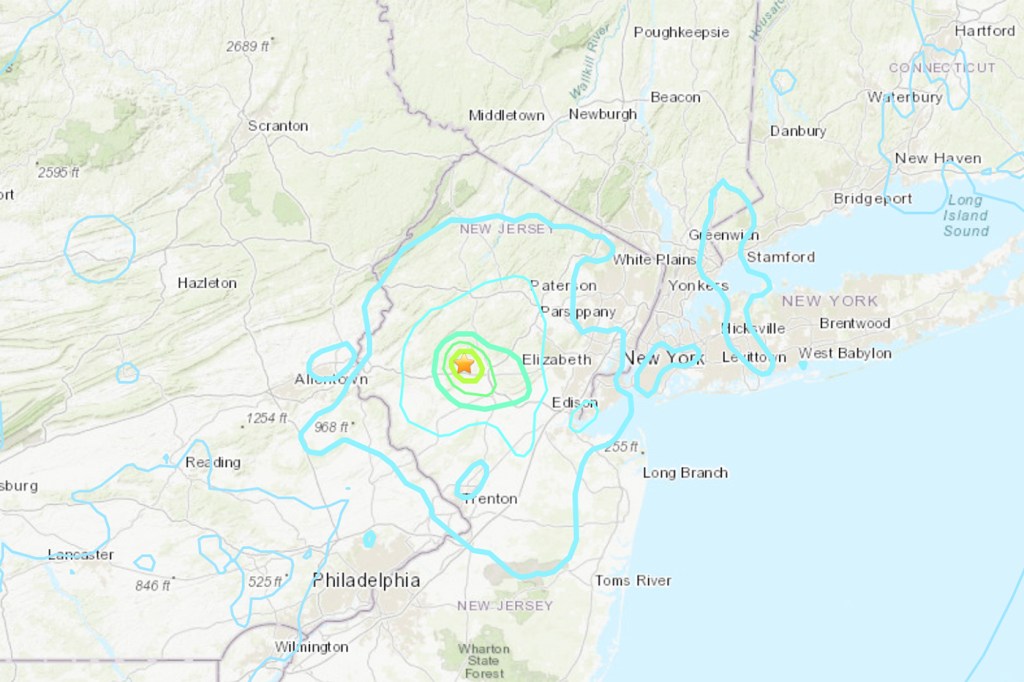4.8 magnitude earthquake in New Jersey raises questions about preparedness. Should the East Coast be worried about future quakes?
Daniel Aldrich, director of the Northeastern’s Security and Resilience Program, says outside of the Bay Area, the U.S. can learn from other parts of the world.

A 4.8 magnitude earthquake centered in New Jersey shook residents in the Mid-Atlantic and Northeast regions of the United States on Friday morning.
The quake occurred at 10:23 a.m., according to the U.S. Geological Survey, and could be felt in parts of Maryland, Delaware, Connecticut, as well across New Jersey, New York and Massachusetts.
The epicenter of the earthquake was located in Lebanon, New Jersey, about 50 miles west of New York City.
Damaging seismic activity on the East Coast of the U.S. is rare. The last quake of significance was measured at 5.8 near Richmond, Virginia, in 2011.
On social media, the response to the East Coast quake was one of shock and intrigue, given how rare earthquakes are there. But disaster recovery experts question whether the eastern part of the country — home to the nation’s capital, as well as its largest and most populous city — would be equipped to deal with a more catastrophic quake, should it strike.
“With the exception of San Francisco, we are very unprepared for earthquakes in North America,” says Daniel Aldrich, a Northeastern professor, director of the university’s Security and Resilience Program and co-director at the Global Resilience Institute.
Friday’s quake comes days after a 7.4 magnitude earthquake struck Taiwan, killing 10 people.
The U.S. Geological Survey notes that severe earthquakes have occurred in the eastern U.S. before, citing the 6.0 magnitude quake that struck north of Boston in 1755. “Damaging earthquakes have occurred historically in nearly every eastern State,” the agency says.
Elsewhere in the world, particularly where seismic activity is far more common, protective measures are part of everyday life — from evacuation drills and protocols, to resilient building codes and earthquake-proof structures, Aldrich says.
“In Australia and New Zealand, individual buildings have been raided to make sure they are earthquake-proof,” Aldrich says. “To what degree is it safe to stay in your house after an earthquake in the four, five or six magnitude range? We have no idea. Again, here in North America most of us aren’t thinking about that.”
The U.S. Geological Survey outlines several steps to take to prepare for an earthquake. They include:
Step 1: Secure your space by identifying hazards and securing moveable items.
Step 2: Plan to be safe by creating a disaster plan and deciding how you will communicate in an emergency.
Step 3: Organize disaster supplies in convenient locations.
Step 4: Minimize financial hardship by organizing important documents.
Earthquakes can have one or two causes, Aldrich says. They can be the result of the movement of plate tectonics that make up the Earth’s crust, or by fracking. The latter cause is why states like Oklahoma and Texas experience more frequent earthquakes.
“I would guess that the earthquake we just had is a natural one,” he says.
Aldrich says it’s possible the region may experience minor aftershocks.
“There used to be a bunch of theories that try to predict what happens after the first quake — whether, for example, the subsequent tremors get stronger or weaker — but we’re not very good at predicting earthquakes, despite all of the amazing science and sensors that we have nowadays,” he says.
Mehrdad Sasani, professor of civil and environmental engineering, concurs — in part.
“Prediction is not really a science,” he says.
Earthquakes are part and parcel to West Coast life because the western part of the country is located at the boundary of major tectonic plates that have many more active faults, Sasani says.
Earthquake preparedness, seismic codes and standards, he says, are based on the knowledge of earthquake severity in a given area, as well as the likelihood of ground motion — and building designs reflect known risks.
In other words, buildings in Massachusetts, for example, need not be designed with the same level of risk in mind compared to buildings in the San Francisco area, he says.
Scientists study geology of a region, taking into account past earthquakes and other factors to calculate probability. The U.S. Geological Survey recently developed a map that shows earthquake probability by region, Sasani says.
Low-magnitude earthquakes occur on the East Coast often, Sasani says.
“The crust of the Earth is moving all the time,” he says.






